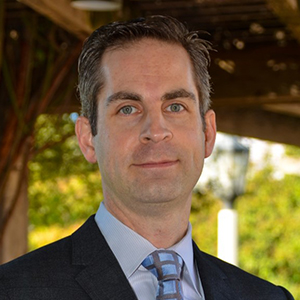TCU Neeley Professor of Operations Management Tyson Browning returns to his alma mater, MIT, to discuss his research on evaluating and accounting for a project’s uncertainties and value.
May 10, 2021
By Nicholas Ferrandino
 The Massachusetts Institute of Technology held a webinar with MIT Alumnus, and today the Professor of Operations Management at the TCU Neeley School of Business, Tyson Browning. During the webinar, Browning discusses methods outlined in his article “Planning, Tracking, and Reducing a Complex Project’s Value at Risk,” published in the Project Management Journal.
The Massachusetts Institute of Technology held a webinar with MIT Alumnus, and today the Professor of Operations Management at the TCU Neeley School of Business, Tyson Browning. During the webinar, Browning discusses methods outlined in his article “Planning, Tracking, and Reducing a Complex Project’s Value at Risk,” published in the Project Management Journal.
He covers the various aspects of how teams working on complex projects such as developing drones and new computer technologies can reduce a project’s risk of failure by appropriate planning and risk assessment. Although the talk focuses on engineering projects, Browning emphasizes that these formulas translate to any kind of project, whether the objective be technology, money or social impact.
One aspect Browning discusses is how to measure progress in a project. It is important to understand that work does not always equal progress. In Browning’s project model, progress is not measured by the amount of work done, but what information and knowledge that work has generated.
“If you’re trying to do a complex project, it doesn’t make any sense to do the simple parts first,” Browning said. “It is important to tackle the riskiest stuff early, thereby getting rid of the big threats to the project’s outcome, or else failing fast.”
If you focus on the easy parts first before overcoming the most consequential uncertainties, you run the risk of wasting resources or having to backtrack, creating more work in the long term. Addressing the riskiest components of a project first helps solidify whether the project is viable. And what knowledge is gleaned from answering the most pressing questions will impact the course of the entire project.
Another aspect of complex project planning Browning talks about is how to plan a project based on the trade-off between a project’s internal risk versus its market risk.
“For a project’s internal risk, we ask ‘did we do the job right?’ But for market risk, the question is ‘did we do the right job?’” Browning said. “You may have gotten exactly the result you wanted to, but if it’s not what the market desires, then it’s not worth much.”
If the bar is set too low, it might be easier for a project to achieve its goals, but it runs the market risk of not beating out its competitors. On the other hand, setting the bar too high drives up the project risk, creating a goal that is too far out of reach. A balance must be struck between available resources and capability and market interest to maximize a project’s chance for success.
Undertake the biggest hurtles first. They are what make or break the entire project. And as simple as it sounds, always consider if a project’s goals are reasonable. Accounting for risks both known and unknown before they happen allows the project more opportunity to adapt.
No matter the end goal, following these tenets will tilt the odds of success in a project’s favor.


